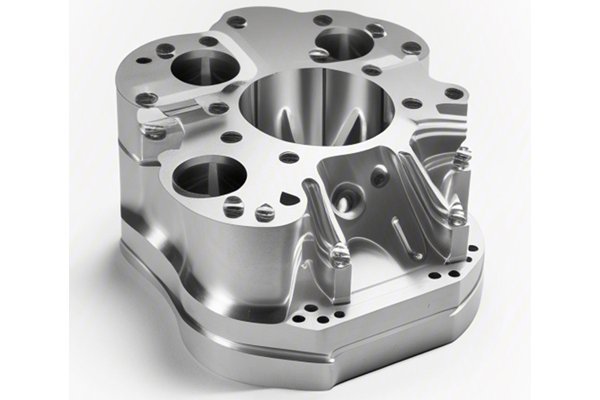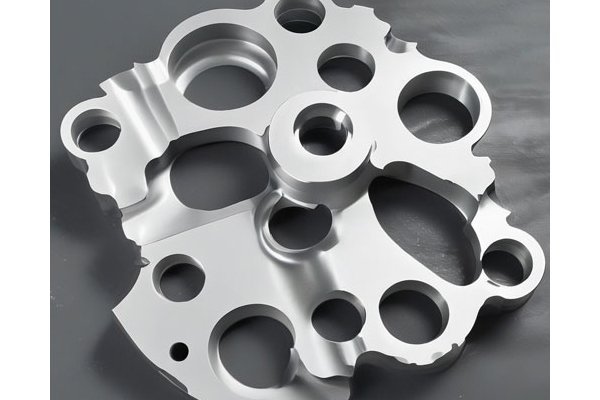Did you know that aluminum is the second-most used metal in the world, following steel? With its remarkable properties such as lightweight, corrosion resistance, and excellent conductivity, aluminum plays a vital role in various industries, from aerospace to automotive. As manufacturers strive for more efficient and precise production methods, CNC (Computer Numerical Control) processing of aluminum products has emerged as a game-changer.
This blog delves into the advantages of CNC processing for aluminum products, providing detailed insights to help you understand how it revolutionizes manufacturing. Whether you’re a seasoned engineer, a business owner, or someone interested in metalworking, this comprehensive guide will provide you with valuable information regarding CNC machining’s functionalities and benefits.
Understanding CNC Processing of Aluminum
Before we dive deep into the advantages, it’s essential to understand what CNC processing entails. CNC processing is the automated control of machining tools using a computer. The process begins with a computer-aided design (CAD) model, which converts the design into a numerical code for machine operation.
The CNC Machining Process for Aluminum
The Role of Aluminum in Manufacturing
Aluminum’s unique properties make it a go-to material in various applications. Lightweight yet strong, it plays a vital role in reducing fuel consumption in automotive applications, enhancing performance in aerospace components, and providing long-lasting products in consumer electronics.
Benefits of CNC Processing for Aluminum Products
One of the primary advantages of CNC processing is its unparalleled precision. Traditional machining methods often rely on manual labor, which can introduce variability and errors. In contrast, CNC machines execute intricate designs with high accuracy and repeatability. This precision is crucial in industries requiring tight tolerances, such as aerospace and medical devices.
CNC machining significantly reduces production time. Automated processes allow for continuous operation and rapid cycle times, leading to higher productivity levels. This efficiency is particularly beneficial in high-volume manufacturing, where rapid turnaround times are critical to meet market demands.
CNC machining makes optimal use of aluminum materials. The precision cutting process minimizes waste, as parts can be nested together in the design stage to maximize material use. This not only saves costs but also promotes environmental sustainability by reducing scrap material.
CNC processing of aluminum opens the door to creative and complex designs that would be virtually impossible to achieve through traditional methods. Intricate patterns, custom shapes, and multi-faceted features can all be easily produced, allowing manufacturers to create unique products tailored to specific customer needs.
CNC processing reduces labor costs associated with traditional machining. With machines operating autonomously, manufacturers can allocate human resources to more critical tasks, such as quality control and maintenance. Furthermore, reduced setup times and optimized production processes lead to lower costs per unit, enhancing overall profitability.
The integration of CNC machining within the framework of Industry 4.0 allows manufacturers to leverage data and automation. Machines can be monitored and controlled remotely, providing detailed analytics for predictive maintenance and operation optimization. This shift towards smart manufacturing enhances productivity while also elevating product quality.
The Anodizing Process
While CNC machining provides the foundation for producing aluminum products efficiently, secondary processes like anodizing enhance their performance and longevity. Anodizing is an electrochemical process that thickens the natural oxide layer on aluminum, rendering it enhanced corrosion resistance, durability, and aesthetic appeal.
Benefits of Anodizing Aluminum

Case Studies: Industries Benefiting from CNC Processing of Aluminum Products
To illustrate the transformative effects of CNC processing, let’s explore a few case studies in different industries:
In aerospace, aluminum is favored for its lightweight properties that reduce aircraft weight and fuel consumption. For instance, an aerospace manufacturer utilized CNC machining to create intricate parts for their aircraft. The high precision of CNC processing allowed them to engineer complex geometries for better aerodynamic performance, ultimately leading to an efficient and competitive product.
Automotive manufacturers are increasingly adopting CNC machining to fabricate lightweight and durable components. By processing aluminum components via CNC, one automotive company managed to decrease the total weight of their vehicle, resulting in improved fuel efficiency while maintaining structural integrity. This innovation set them apart in a highly competitive market.
The electronics industry also sees significant advantages in CNC-processing aluminum for enclosures and parts. A leading electronics manufacturer turned to CNC machining to produce custom cooling fins for their devices. The precision allowed them to ensure optimal thermal management and improve product performance.
Addressing Common Challenges in CNC Processing
While CNC processing of aluminum products offers numerous benefits, challenges can arise. Here are some common issues manufacturers may face and how to address them:
Future Trends in CNC Processing of Aluminum Products
The future of CNC processing for aluminum is bright. As technology evolves, we can expect several trends to enhance the capabilities of CNC machining:
CNC processing of aluminum products is undoubtedly a transformative force in the manufacturing industry. From precision and speed to versatility and cost-effectiveness, the advantages are profound and numerous. As we look towards the future, embracing advancements in technology and sustainability will further solidify CNC machining’s crucial role in efficient production practices.
In summary, understanding the benefits of CNC processing for aluminum products is paramount for anyone involved in manufacturing. By leveraging precision machining techniques and secondary processes such as anodizing, companies can not only enhance their products but also position themselves competitively in the industry.
Reflecting on this blog, it is essential for readers to consider the broader implications of CNC machining. Manufacturers should embrace these advancements to enhance their operations, create superior products, and meet evolving customer demands in an ever-competitive landscape. The insight and information contained herein aim to empower you to make informed decisions as you navigate the world of aluminum processing through CNC technology.






